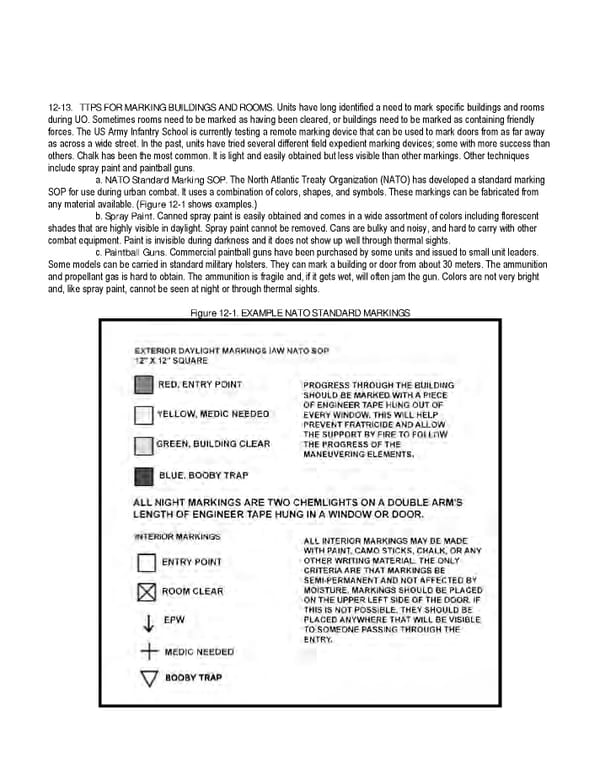12-13. TTPS FOR MARKING BUILDINGS AND ROOMS. Units have long identified a need to mark specific buildings and rooms during UO. Sometimes rooms need to be marked as having been cleared, or buildings need to be marked as containing friendly forces. The US Army Infantry School is currently testing a remote marking device that can be used to mark doors from as far away as across a wide street. In the past, units have tried several different field expedient marking devices; some with more success than others. Chalk has been the most common. It is light and easily obtained but less visible than other markings. Other techniques include spray paint and paintball guns. a. NATO Standard Marking SOP. The North Atlantic Treaty Organization (NATO) has developed a standard marking SOP for use during urban combat. It uses a combination of colors, shapes, and symbols. These markings can be fabricated from any material available. (Figure 12-1 shows examples.) b. Spray Paint. Canned spray paint is easily obtained and comes in a wide assortment of colors including florescent shades that are highly visible in daylight. Spray paint cannot be removed. Cans are bulky and noisy, and hard to carry with other combat equipment. Paint is invisible during darkness and it does not show up well through thermal sights. c. Paintball Guns. Commercial paintball guns have been purchased by some units and issued to small unit leaders. Some models can be carried in standard military holsters. They can mark a building or door from about 30 meters. The ammunition and propellant gas is hard to obtain. The ammunition is fragile and, if it gets wet, will often jam the gun. Colors are not very bright and, like spray paint, cannot be seen at night or through thermal sights. Figure 12-1. EXAMPLE NATO STANDARD MARKINGS
 Ranger Handbook Page 231 Page 233
Ranger Handbook Page 231 Page 233